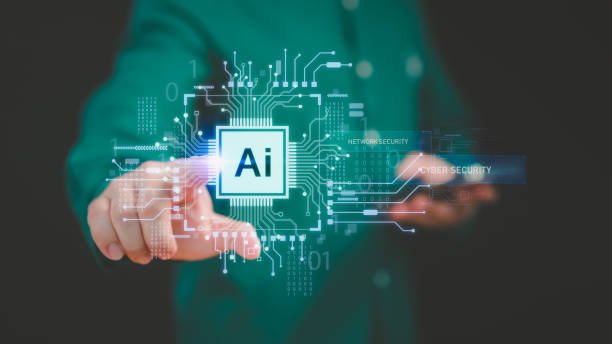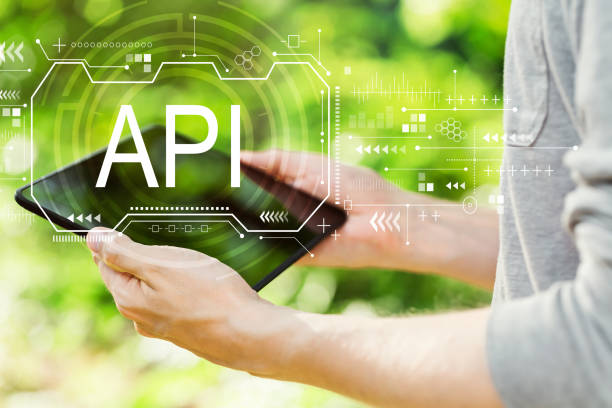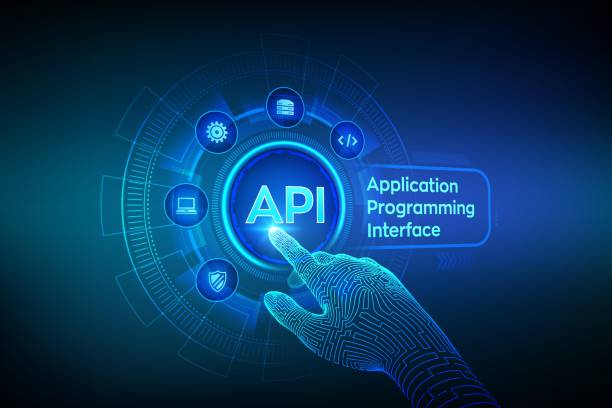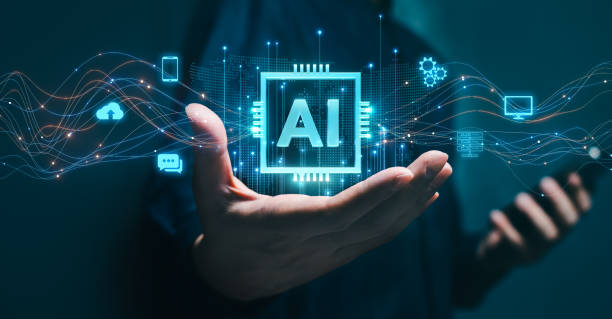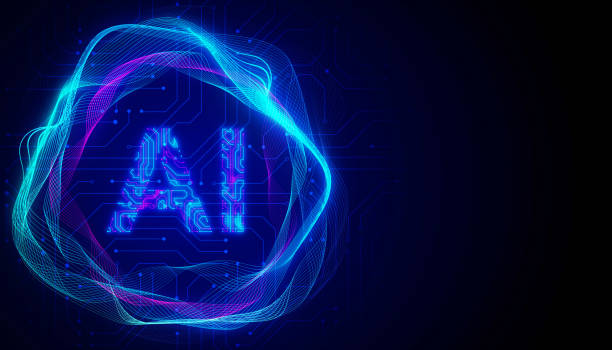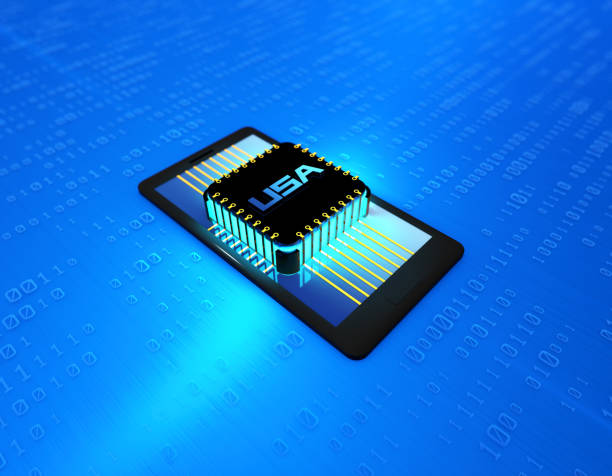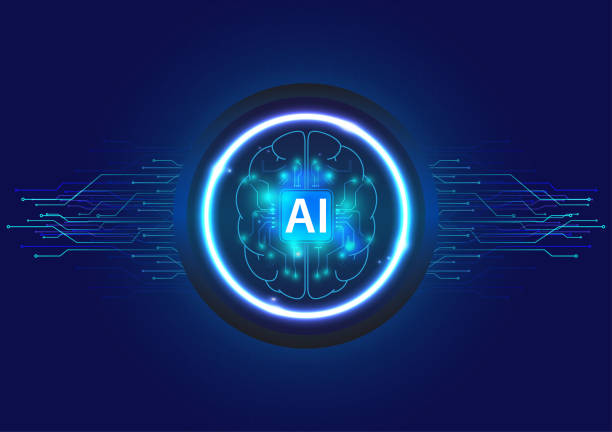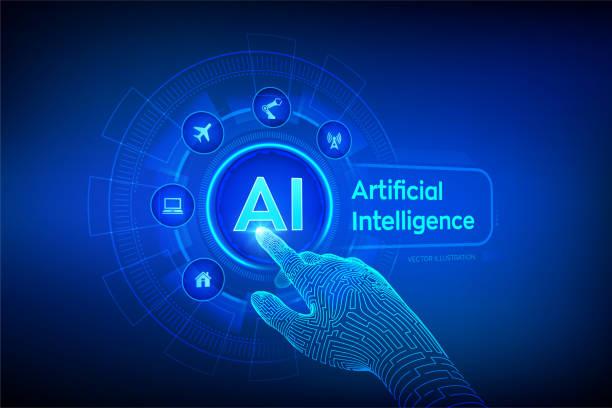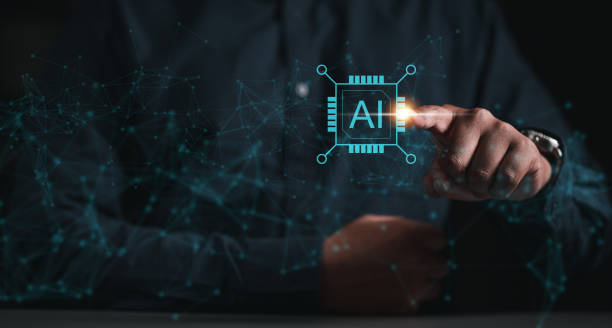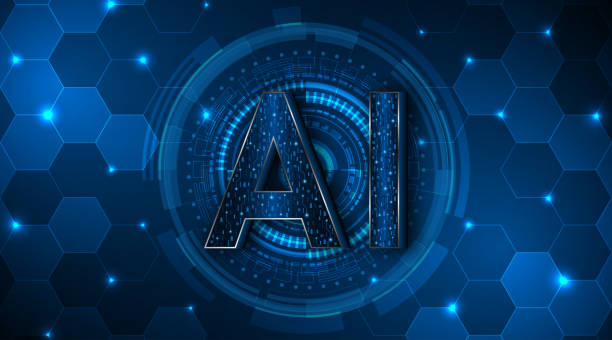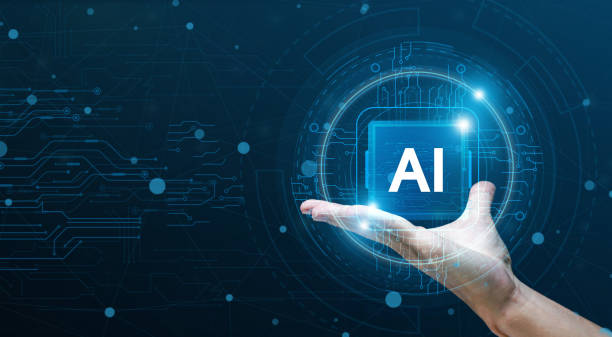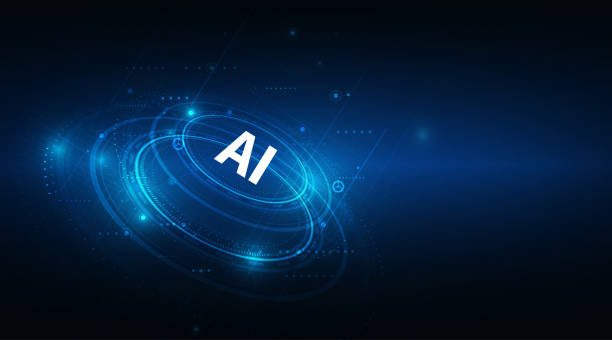What is an Artificial Intelligence Robot and How Does it Work?
#Artificial Intelligence Robot is a combination of two separate fields: #Robotics and #Artificial_Intelligence.
In fact, an intelligent robot is a machine that, using artificial intelligence algorithms, is capable of performing tasks that usually require human intelligence.
These tasks can include learning, reasoning, problem-solving, natural language understanding, and computer vision.
An artificial intelligence robot receives information from its surroundings through sensors, processes this information, and makes decisions based on its algorithms.
The decisions made lead to the performance of specific operations by the robot.
For example, an artificial intelligence robot designed to clean a room can identify obstacles, optimize its path, and automatically go to recharge.
An artificial intelligence robot is not just a machine, but a complex system that is capable of interacting intelligently with its environment.
The main components of an artificial intelligence robot include sensors (for receiving information), processors (for processing information and decision-making), actuators (for performing operations), and artificial intelligence algorithms.
These algorithms allow the robot to learn, adapt, and improve its performance.
An artificial intelligence robot can be used in various fields such as industry, medicine, customer service, education, and entertainment.
Industrial robots can perform repetitive and dangerous tasks, medical robots can assist in surgeries, customer service robots can answer questions, and educational robots can help students better understand concepts.
Tired of your company’s website not being seen as it should be, and losing potential customers? Solve this problem forever with professional and effective website design by Rasaweb!
✅ Increase brand credibility and build customer trust
✅ Attract targeted sales leads
⚡ Contact us now for a free consultation!
Types of Artificial Intelligence Robots Based on Application
Artificial intelligence robots can be divided into different categories based on their application.
One common classification is based on the type of tasks that the robot performs.
For example, industrial robots are used to perform production and assembly tasks in factories.
These robots are usually very precise and fast and can work continuously and without fatigue.
Medical robots are used in hospitals and medical centers to assist doctors in surgeries, rehabilitation, and patient care.
These robots can perform complex surgeries with high precision and help patients recover faster.
Customer service artificial intelligence robots are used to answer customer questions, provide technical support, and perform tasks related to customer service.
These robots typically use natural language to interact with customers and can automatically answer common questions.
Another classification is based on the type of robot movement.
Mobile robots can move in different environments and perform various tasks.
These robots typically use wheels, legs, or other locomotion mechanisms for movement.
Stationary robots are located in a fixed location and perform specific tasks in the same location.
These robots are typically used for performing repetitive and precise tasks.
An artificial intelligence robot can be used in various environments such as factories, hospitals, homes, and open spaces.
The choice of the appropriate type of robot depends on the type of tasks that need to be performed and the environment in which the robot will operate.
Advantages of Using Artificial Intelligence Robots
Using artificial intelligence robots has several advantages.
One of the most important advantages is increased productivity.
Robots can perform tasks faster and more accurately than humans, which leads to increased production and reduced costs.
Artificial intelligence robots can also perform dangerous and repetitive tasks, which prevents human injury and improves the quality of work life.
Another advantage is reduced errors.
Robots work continuously and without fatigue, which reduces the likelihood of errors.
Artificial intelligence robots can also accurately collect and analyze data, which helps in better decision-making.
In addition, artificial intelligence robots can be used in various fields such as medicine, education, and customer service.
In medicine, robots can assist in surgeries, distribute medications, and help patients rehabilitate.
In education, robots can help students better understand concepts and learn individually.
In customer service, robots can answer customer questions, take orders, and solve problems.
In summary, the use of artificial intelligence robots can lead to increased productivity, reduced errors, improved quality of work life, and improved services in various fields.
| Advantages | Descriptions |
|---|---|
| Increased Productivity | Performing tasks faster and more accurately |
| Reduced Errors | Continuous work without fatigue |
| Reduced Costs | Optimizing processes and using resources |
| Performing Dangerous Tasks | Protecting the workforce |
Click here to preview your posts with PRO themes ››
Challenges Facing the Development of Artificial Intelligence Robots
The development of artificial intelligence robots faces several challenges.
One of the most important challenges is the complexity of artificial intelligence algorithms.
For robots to be able to perform complex tasks independently, they need advanced algorithms, the development of which is time-consuming and costly.
Another challenge is the need for a lot of data to train robots.
Robots need a lot of data to learn and adapt to their environment.
Collecting and labeling this data can be a big challenge.
There are also ethical and social issues.
With the increasing use of robots, concerns have been raised about job loss, discrimination, and privacy.
These issues need to be seriously addressed and solutions need to be provided.
With the advancement of technology, these challenges are gradually being addressed.
However, there is still a long way to go to achieve intelligent and independent robots.
Did you know that a poor online store design can drive away up to 70% of your potential customers? Rasaweb transforms your sales with professional and user-friendly e-commerce website design.
✅ Significant increase in sales and revenue
✅ Complete optimization for search engines and mobile
⚡ [Get a free consultation from Rasaweb]
Applications of Artificial Intelligence Robots in Industry
Artificial intelligence robots have extensive applications in the industry.
One of the most important applications is the automation of production processes.
Industrial robots can perform repetitive and dangerous tasks with high precision and speed, which leads to increased productivity and reduced costs.
Artificial intelligence robots can also help in quality control of products.
These robots can use computer vision and other sensors to identify product defects and prevent defective products from entering the market.
In addition, artificial intelligence robots can also be used in logistics and warehousing.
These robots can move goods in warehouses, pack orders, and deliver them.
The use of robots in logistics can lead to reduced delivery time, reduced costs, and improved accuracy.
Artificial intelligence robots are changing the shape of various industries and playing an important role in increasing the competitiveness of companies.
Artificial Intelligence Robots in Medicine and Healthcare
Artificial intelligence robots also have many applications in medicine and healthcare.
Surgical robots can perform complex surgeries with high precision, which leads to a reduced risk of complications and improved surgical outcomes.
Artificial intelligence robots can also help in the rehabilitation of patients.
These robots can help patients regain their movement and maintain their independence.
In addition, artificial intelligence robots can also be used in the diagnosis of diseases.
These robots can analyze medical images, identify disease symptoms, and assist physicians in more accurate diagnoses.
Artificial intelligence robots can also assist in the care of the elderly and people with disabilities.
These robots can help people perform daily tasks and help them maintain their independence.
Artificial intelligence robots have a high potential to improve the quality of healthcare and will play an important role in the future of medicine.
What Will the Future of Artificial Intelligence Robots Be?
The future of artificial intelligence robots looks very bright.
With the advancement of technology, robots will become smarter, more independent, and more capable.
Artificial intelligence robots will have wider applications in various fields such as industry, medicine, education, and customer service.
Industrial robots can perform more complex tasks, medical robots can perform more complex surgeries, educational robots can help students learn individually, and customer service robots can answer customer questions more accurately and quickly.
Click here to preview your posts with PRO themes ››
However, the development of artificial intelligence robots also requires attention to ethical and social issues.
It is necessary to ensure that robots are used responsibly and in the interests of society.
Artificial intelligence robots can play an important role in improving the quality of human life, but they need to be developed carefully and cautiously.
| Area | Predictions |
|---|---|
| Industry | More advanced automation, customized production |
| Medicine | More precise surgeries, faster diagnosis |
| Education | Personalized education, interactive learning |
| Customer Service | 24/7 response, customized services |
The Impact of Artificial Intelligence Robots on the Labor Market
One of the main concerns about the development of artificial intelligence robots is its impact on the labor market.
Some experts believe that robots can cause job losses in some industries.
Artificial intelligence robots can perform repetitive and routine tasks, which reduces the need for human resources in these areas.
However, other experts believe that robots can also create new job opportunities.
Artificial intelligence robots can perform tasks that are dangerous or difficult for humans, which leads to job creation in new areas such as robot development and maintenance.
In addition, robots can increase productivity, which leads to economic growth and job creation in other industries.
In general, the impact of robots on the labor market is complex and depends on the type of industry, type of job, and speed of technological advancement.
Governments and companies need to work to prepare the workforce for the changes resulting from automation.
Did you know that 94% of users’ first impressions of a business are related to its website design? With professional corporate website design by **Rasaweb**, turn this first impression into an opportunity for growth.
✅ Attract more customers and increase sales
✅ Create credibility and trust in the eyes of the audience⚡ Get a free website design consultation!
Ethical Considerations in the Design and Use of Artificial Intelligence Robots
The design and use of artificial intelligence robots require attention to ethical considerations.
One of the most important considerations is protecting people’s privacy.
Artificial intelligence robots can collect a lot of data about people, which needs to be used responsibly and with respect for people’s privacy.
Another consideration is preventing discrimination.
Robots should not make decisions based on race, gender, religion, or other discriminatory factors.
In addition, the responsibility for the decisions of robots needs to be determined.
If a robot makes a mistake, who will be responsible? The robot designer, the robot user, or the robot itself? These questions need to be carefully examined and appropriate rules and regulations need to be established.
The development of artificial intelligence robots should be done in compliance with ethical principles and in the interests of society.
Artificial intelligence robots have a high potential to improve the quality of human life, but they need to be developed carefully and cautiously.
How to Build an Artificial Intelligence Robot? A Step-by-Step Guide
Building an artificial intelligence robot can be a challenging but also fascinating project.
The first step is to determine the robot’s purpose.
What is the robot supposed to do? After determining the purpose, you need to prepare the necessary components of the robot.
These components include sensors, processors, actuators, and power supply.
Sensors are used to receive information from the environment, processors are used to process information and make decisions, actuators are used to perform operations, and the power supply is used to supply power to the robot.
The next step is to program the robot.
You need to implement artificial intelligence algorithms so that the robot can learn, adapt, and make decisions.
After programming, you need to test the robot and evaluate its performance.
If necessary, you need to improve the algorithms and programs so that the robot works correctly.
Building an artificial intelligence robot requires knowledge and skills in various fields such as robotics, artificial intelligence, programming, and electronics.
However, with effort and perseverance, you can build an intelligent robot and use it to perform various tasks.
Click here to preview your posts with PRO themes ››
Frequently Asked Questions
| Row | Question | Answer |
|---|---|---|
| 1 | What is an artificial intelligence robot? | An artificial intelligence robot is a machine capable of understanding, reasoning, learning, and problem-solving, and can perform complex tasks with relative autonomy. |
| 2 | What are the most important applications of artificial intelligence robots? | The main applications include industrial production, customer service (chatbots), medicine and surgery, autonomous transportation, space exploration, and military affairs. |
| 3 | What is the main difference between an artificial intelligence robot and a regular robot? | A regular robot only follows programmed instructions, while an artificial intelligence robot can learn from data, make decisions, and adapt to new environments. |
| 4 | How do artificial intelligence robots learn? | They learn through machine learning algorithms (such as deep learning, reinforcement learning) and processing vast amounts of data, identifying patterns, and improving their performance. |
| 5 | Can artificial intelligence robots have emotions? | Currently, artificial intelligence robots do not have real emotions in the human sense. They can mimic or recognize emotions, but they do not understand or experience them. |
| 6 | What are the current limitations of artificial intelligence robots? | Limitations include the need for a lot of data, the inability to understand abstract concepts, the lack of real creativity, ethical issues, and the challenges of generalizability in new environments. |
| 7 | What is the role of artificial intelligence in the development of humanoid robots? | Artificial intelligence helps humanoid robots to walk, maintain their balance, understand the surrounding environment, interact with humans, and perform complex tasks. |
| 8 | How is the future of artificial intelligence robots predicted? | It is predicted that artificial intelligence robots will become smarter, more autonomous, and capable of performing more complex tasks in everyday life and industry, and their interaction with humans will increase. |
| 9 | Can artificial intelligence robots replace all human jobs? | It is unlikely that all human jobs will be replaced. Robots take on many repetitive and dangerous tasks, but jobs that require creativity, empathy, and ethical judgment will remain. |
| 10 | What ethical and social challenges are raised with the expansion of artificial intelligence robots? | Challenges include issues related to privacy, data security, ethical decision-making by robots, the impact on employment, and accountability in the event of errors. |
And other services of Rasa Web Advertising Agency in the field of advertising
Intelligent Link Building: Designed for businesses looking to grow online through precise audience targeting.
Intelligent Custom Software: A new service to increase sales through attractive user interface design.
Intelligent Marketing Automation: A professional solution to increase site visits with a focus on customizing the user experience.
Intelligent Reportage: A creative platform to improve increase site visits with marketing automation.
Intelligent Website Development: A professional solution for online growth with a focus on SEO-oriented content strategy.
And more than hundreds of other services in the field of internet advertising, advertising consulting and organizational solutions
Internet Advertising | Advertising Strategy | Advertorial
Sources
Artificial Intelligence Robots: From Science Fiction to Today’s Reality
,What can an intelligent robot do in our lives?
,The most important applications of artificial intelligence in robotics
,Intelligent robot can fight Alzheimer’s
? With “Rasaweb Afarin”, your business will fly in the digital world! From fast and creative website design to comprehensive online marketing strategies, we are your digital success partner.
📍 Tehran, Mirdamad Street, next to the Central Bank, South Kazeroon Alley, Ramin Alley No. 6

